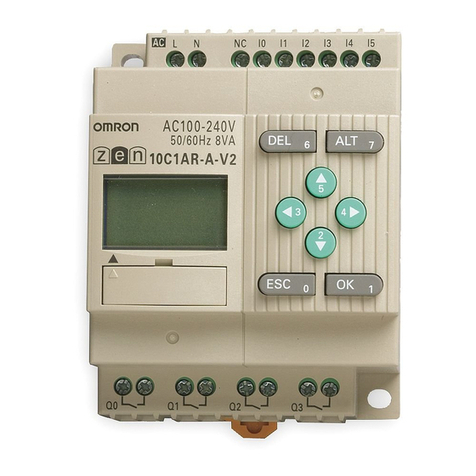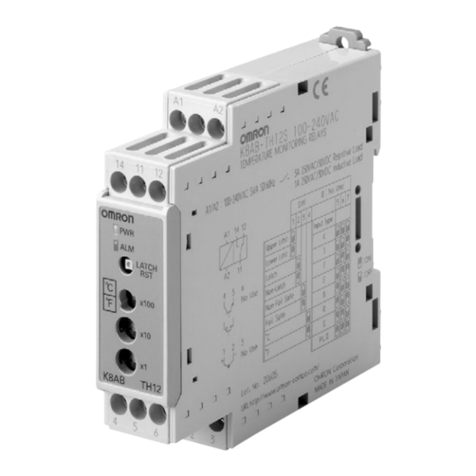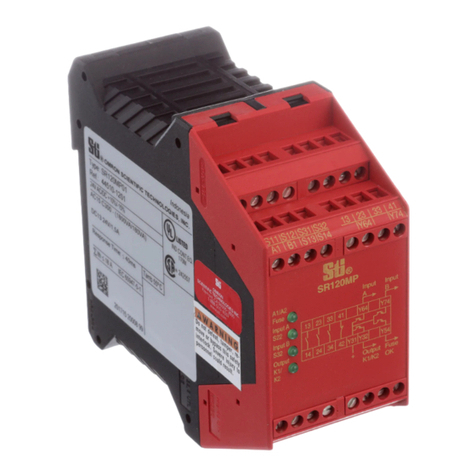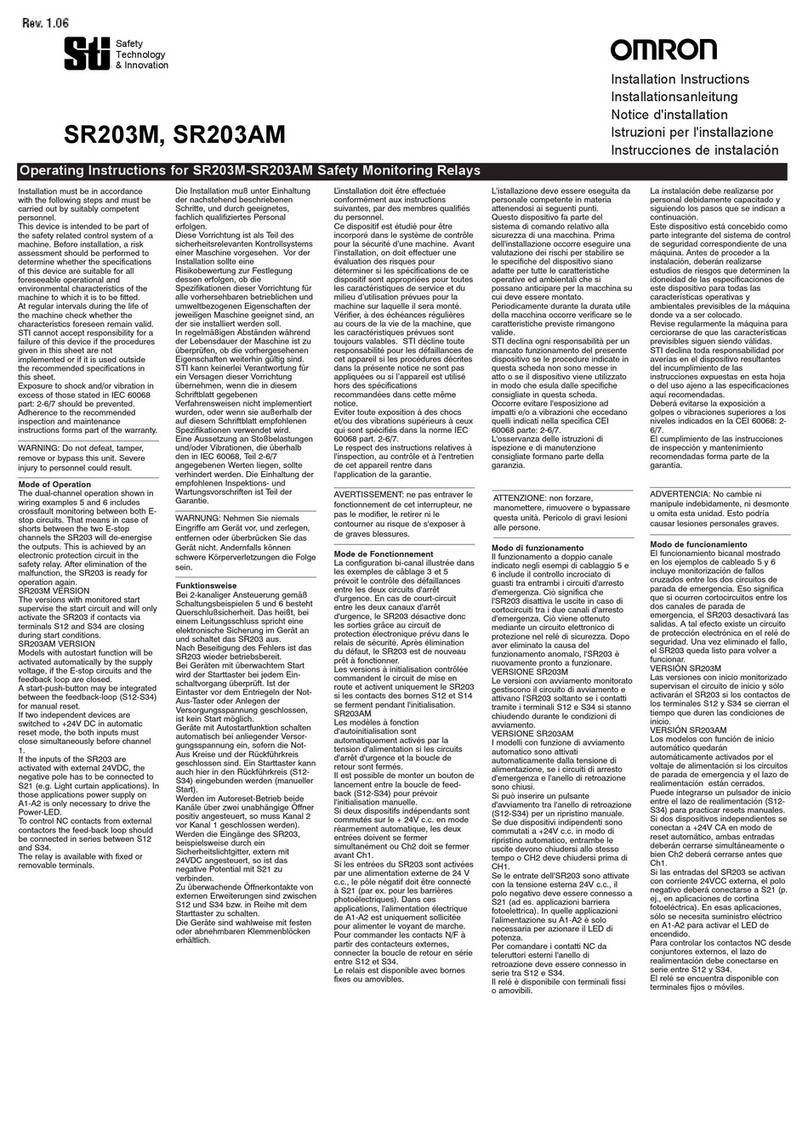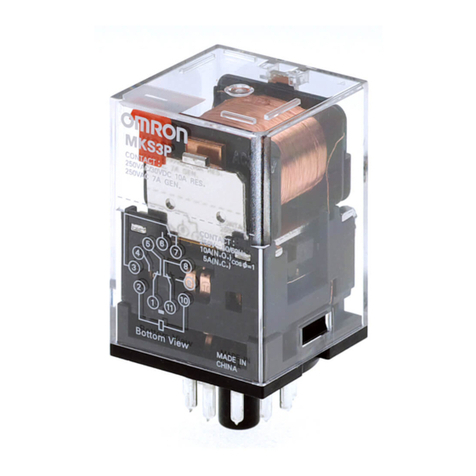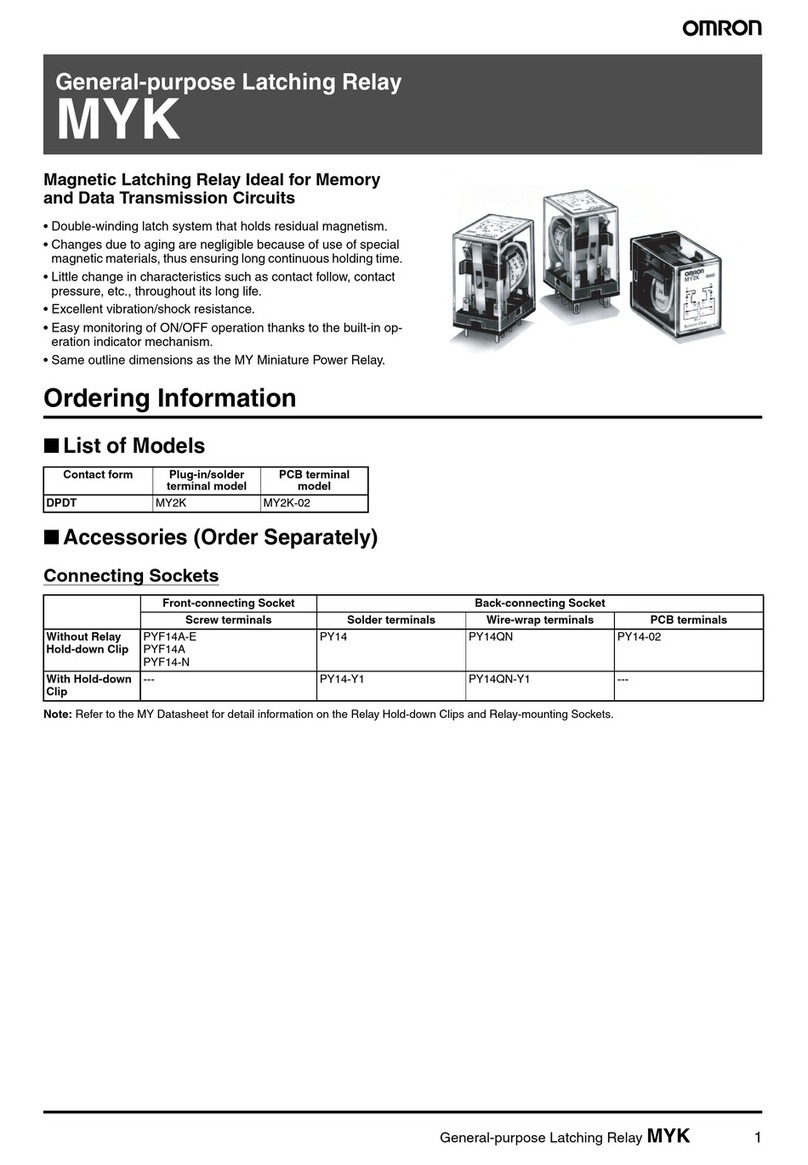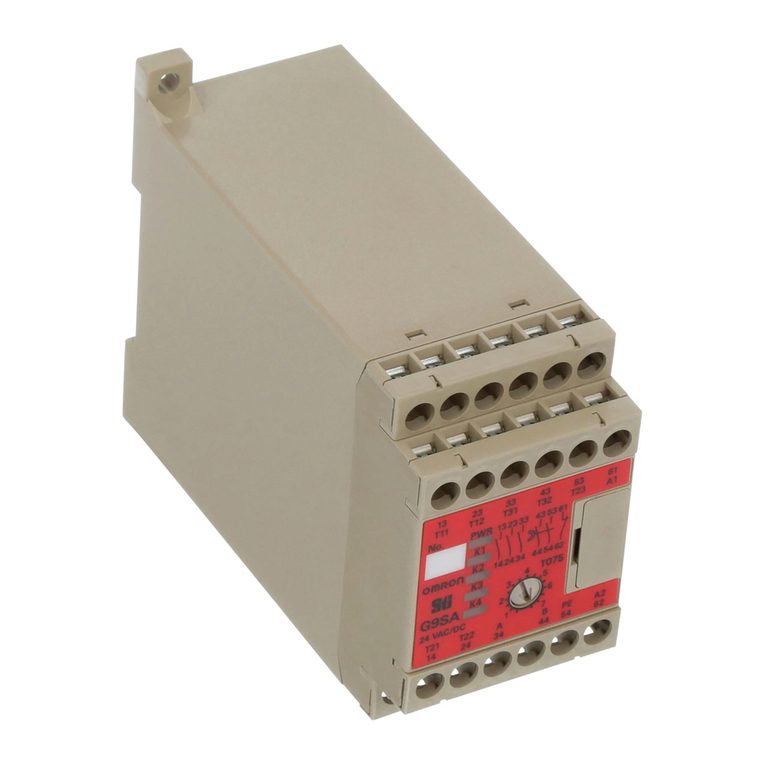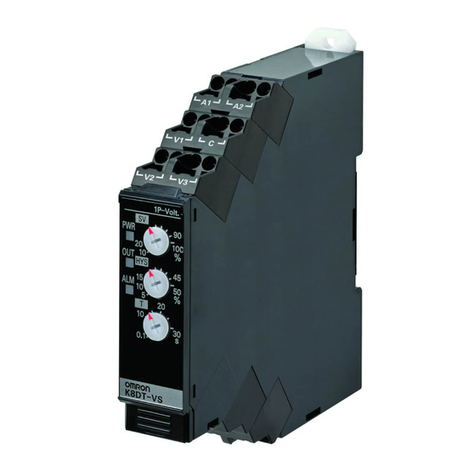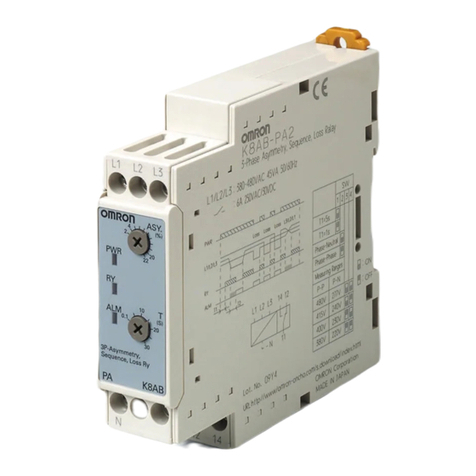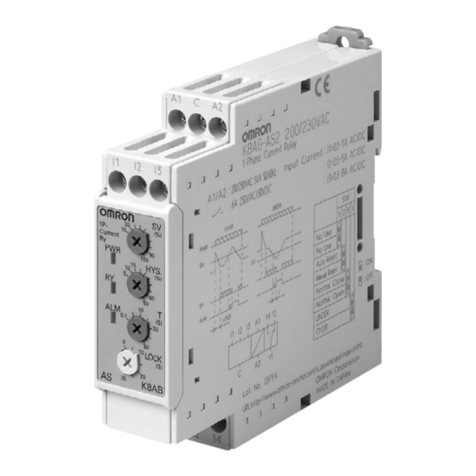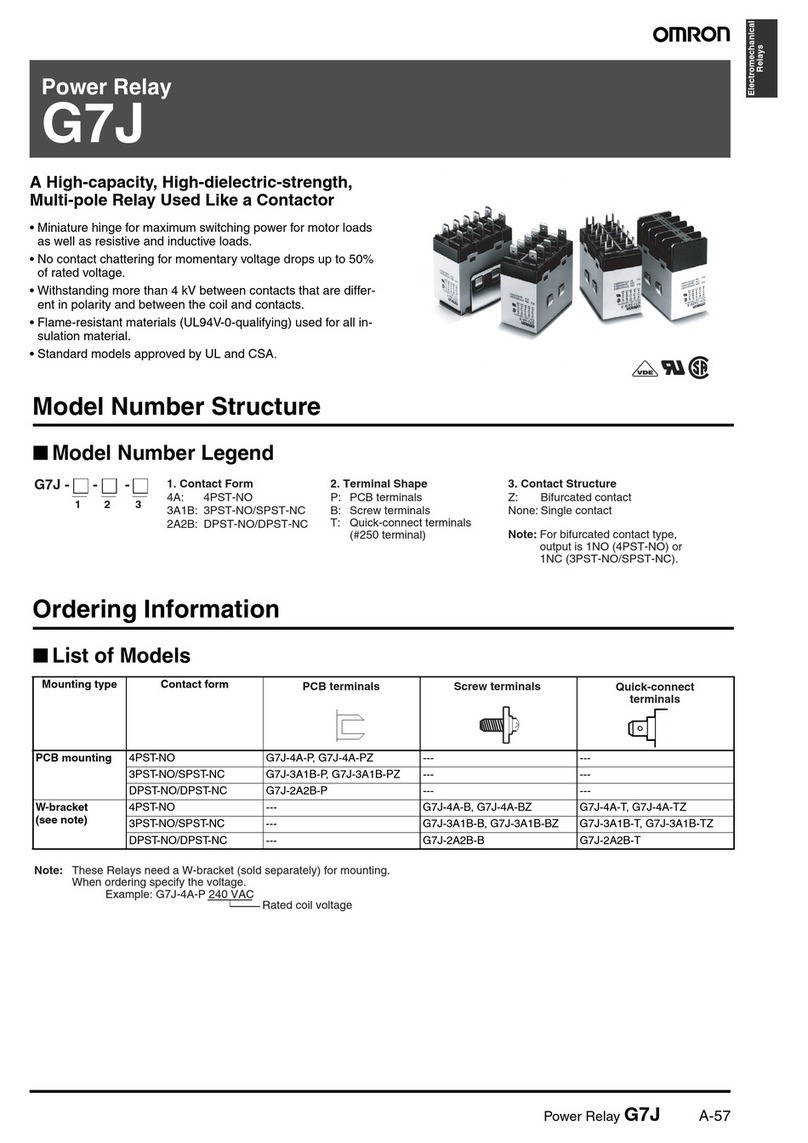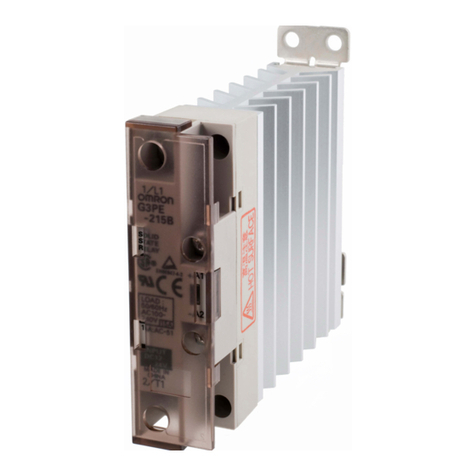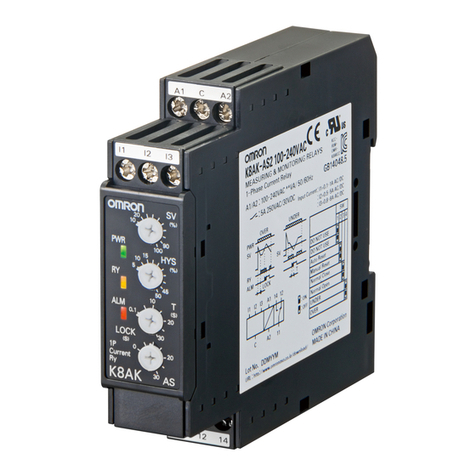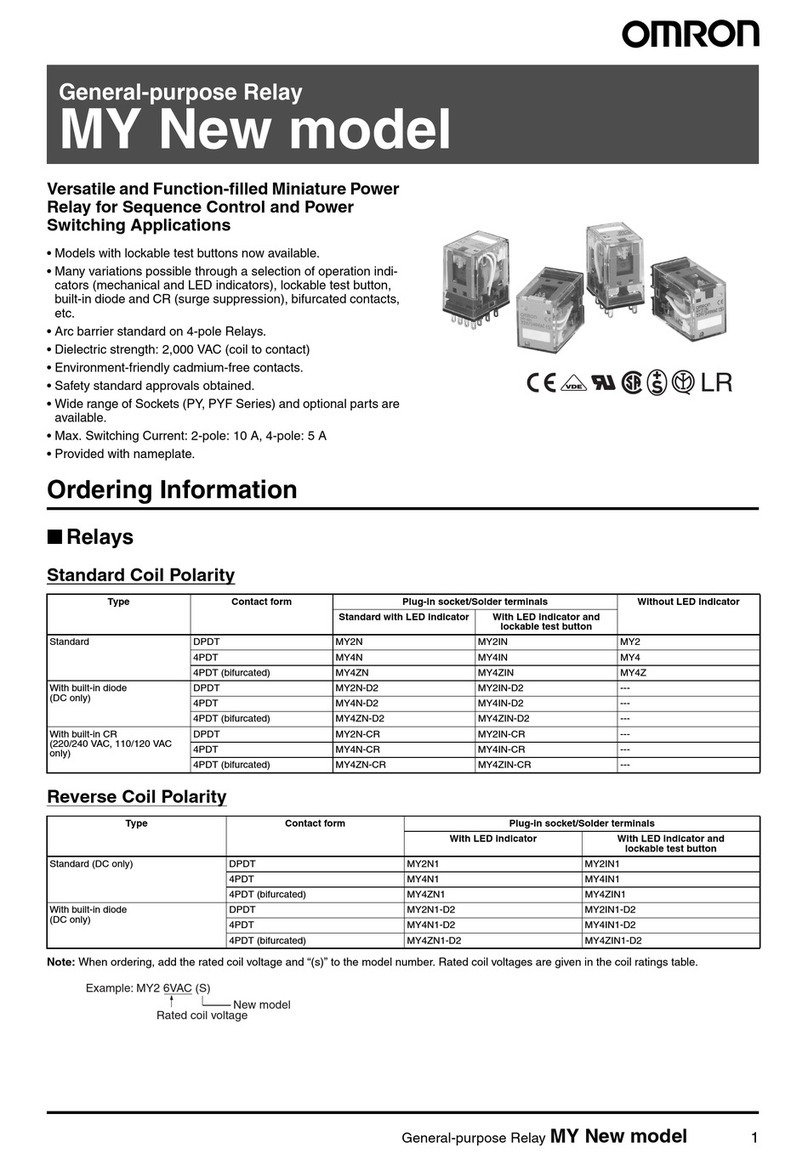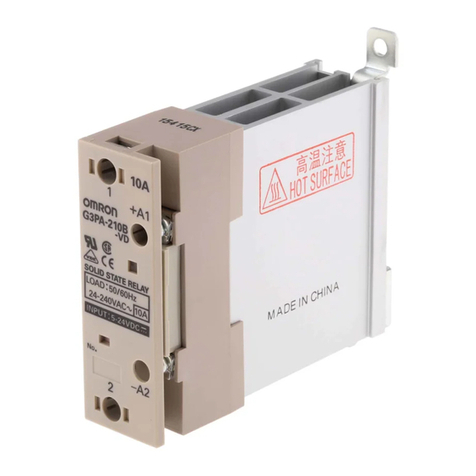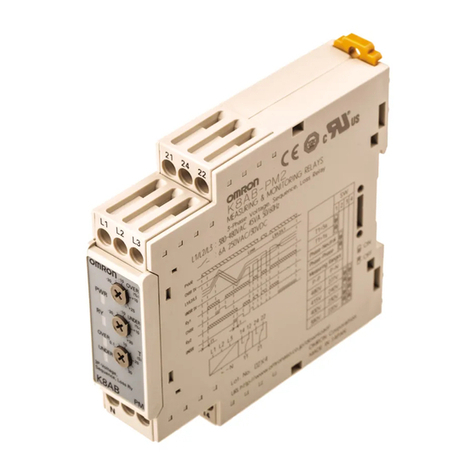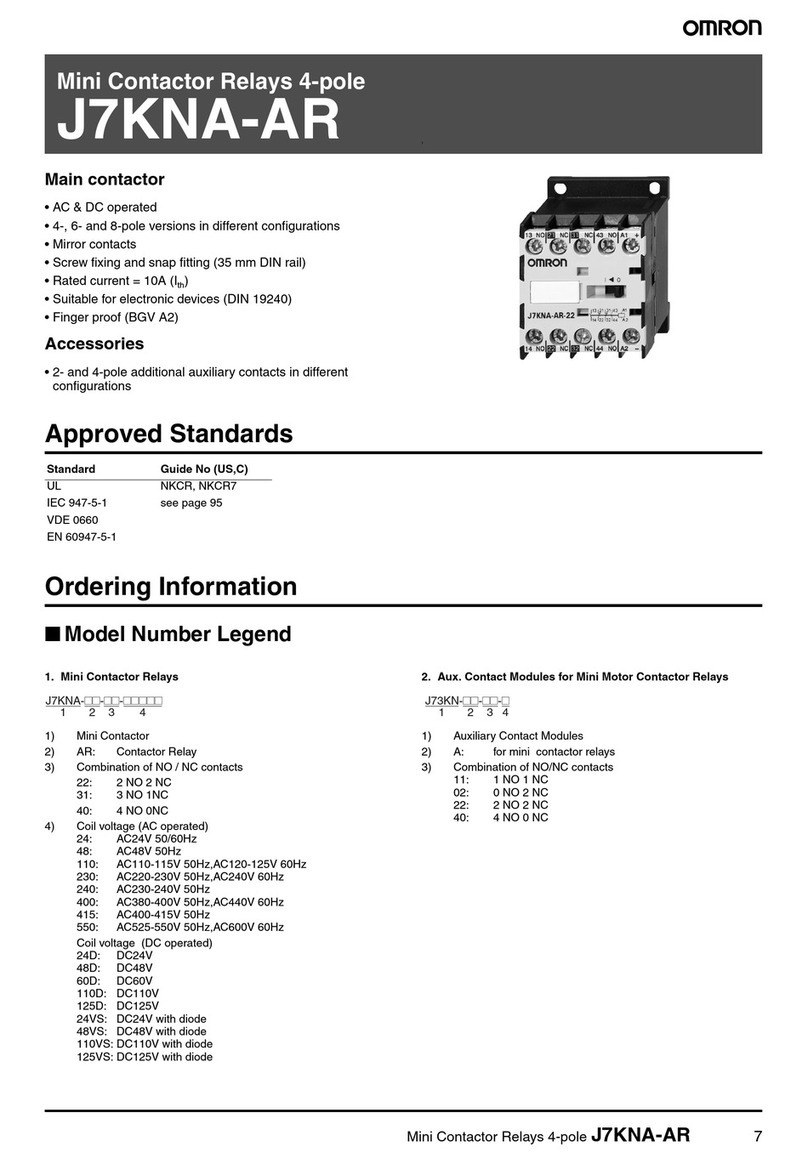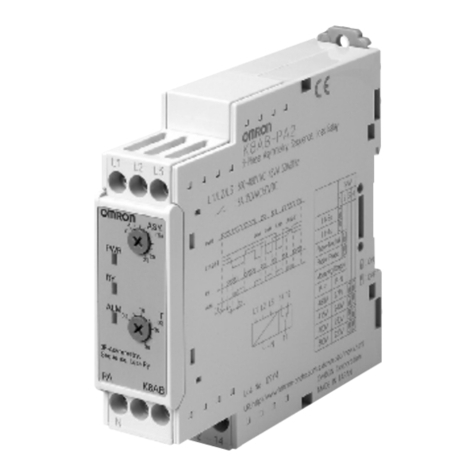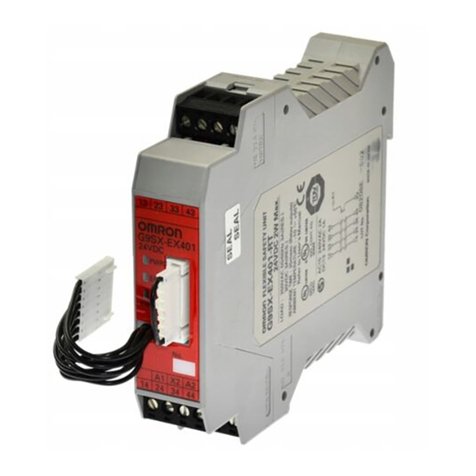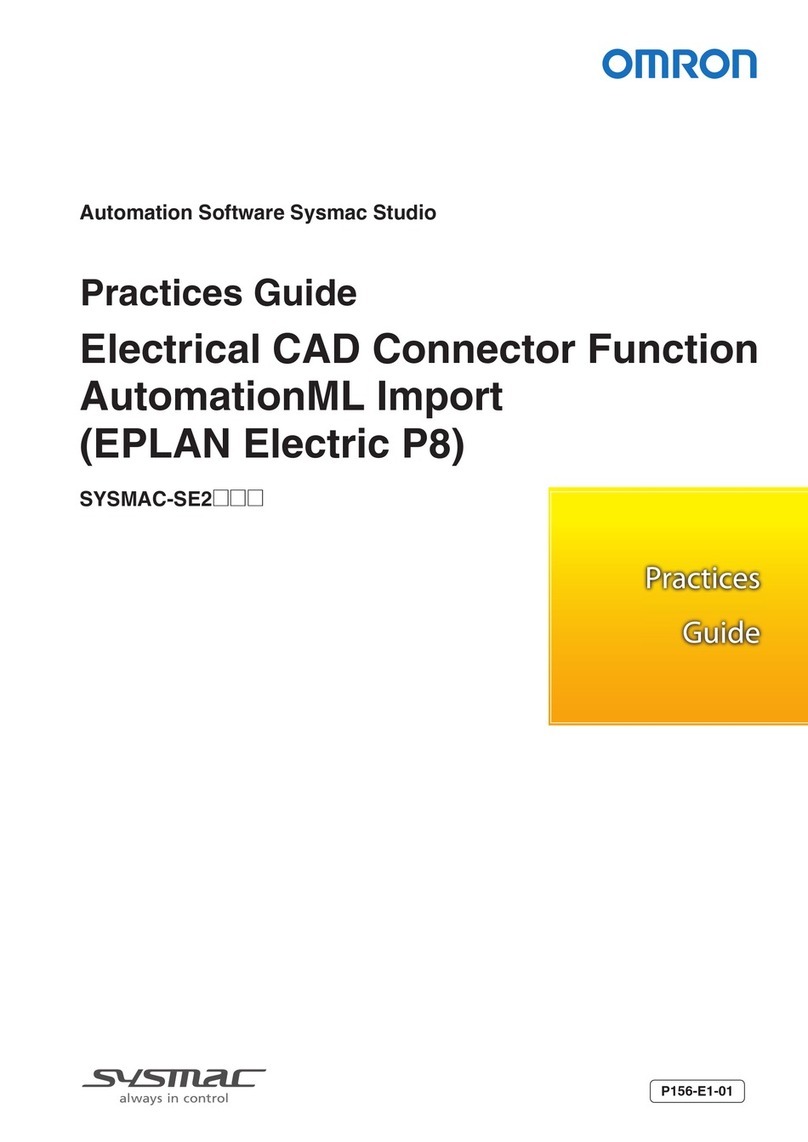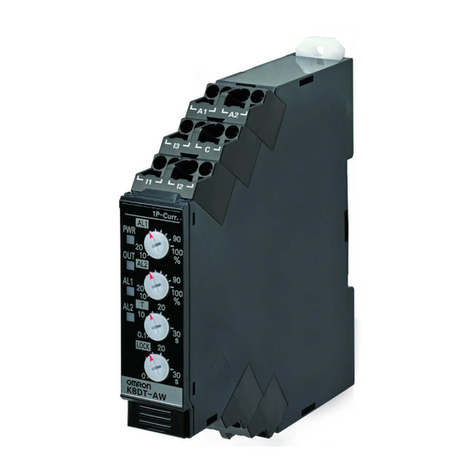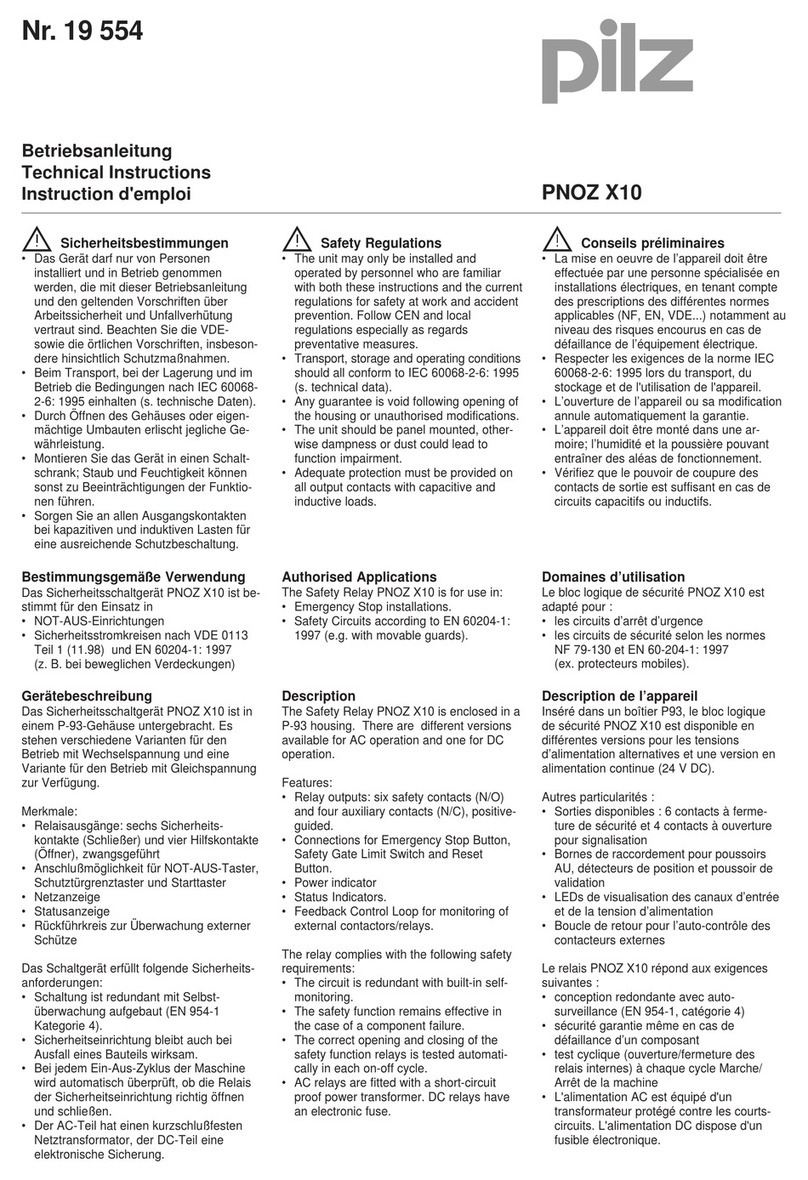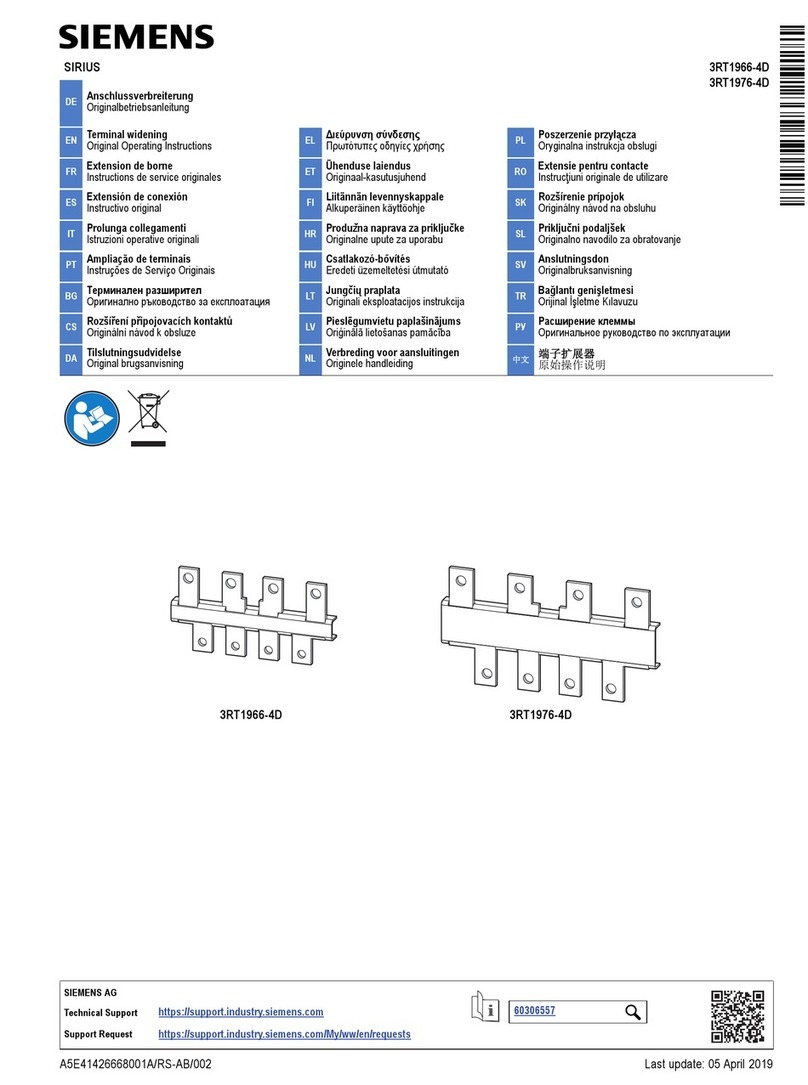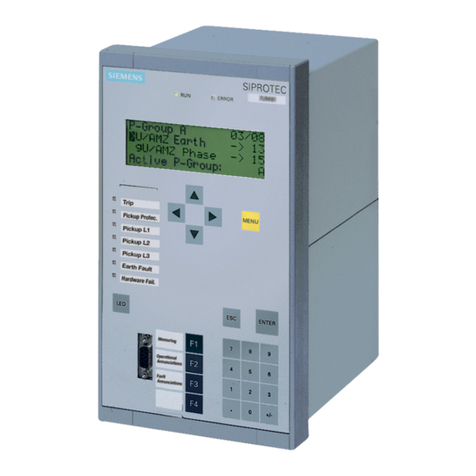
K8DT-TH
10
1. Do not use or store the product in the following locations.
•Locations subject to water or oil
•Locations subject to direct radiant heating equipment
•Outdoor locations or under direct sunlight
•Locations subject to dust or corrosive gases (sulfurizing gases,
ammonia gases, etc.)
•Locations subject to rapid temperature changes
•Locations prone to icing and dew condensation
•Locations subject to vibration and large shocks
•Locations subject to wind and rain
•Locations subject to direct radiant heating equipment
•Locations subject to static electricity or noise
•Locations subject to insects or small animals
2. Use and store the product in a location where the ambient
temperature and humidity are within the specified ranges. If
applicable, provide forced cooling.
3. Check terminal polarity when wiring and wire all connections
correctly. The power supply terminals do not have polarity.
4. Do not wire the input and output terminals incorrectly.
5. Make sure the power supply voltage and loads are within the
specifications and ratings for the product.
6. Make sure the type of the thermocouple matches the input type
that the Temperature Monitoring Relay is designed for.
7. If you need to extend the length of the lead wires on the
thermocouple, make sure to match the type of thermocouple and
always use compensating conductors.
8. Point the arrows on the rotary switches to the required numbers.
Do not set a switch midway between two positions. Malfunction
could result from an improper setting.
9. To extend the lead wires on the platinum resistance thermometer,
use lead wires with a low resistance (5 Ωor less per wire), and
make the resistance equal on all three lead wires.
10.Make sure the ferrule terminals for wiring are of the specified size.
11.
The stripping length is 8 mm. Insert the wires all the way to the back.
12.Do not connect anything to terminals that are not being used.
13.Use a power supply that will reach the rated voltage within 1
second after the power is turned ON.
14.After you turn ON the power, it takes 2 seconds for the outputs of
the Temperature Monitoring Relay to stabilize. Take this time into
account when you design the control panel.
15.Allow at least 30 minutes for the product to warm up. During this
time, the correct temperature will not be detected and the output
may malfunction.
16.Keep wiring separate from high voltages and power lines that draw
large currents. Do not place product wiring in parallel with or in the
same path as high-voltage or high-current lines.
17.Do not install the product near equipment that generates high
frequencies or surges.
18.The product may cause incoming radio wave interference. Do not
use the product near radio wave receivers.
19.Install an external switch or circuit breaker and label it clearly so
that the operator can quickly turn OFF the power supply.
20.When discarding the product, properly dispose of it as industrial
waste.
21.Make sure the indicators operate correctly. Depending on the
application environment, the indicators may deteriorate
prematurely and become difficult to see.
22.The maximum terminal temperature is 80°C. Use wires with a
temperature resistance of at least 80°C.
23.Do not use the product if it is accidentally dropped. The internal
components may be damaged.
24.Be sure you understand the contents of this catalog and handle
the product according to the instructions provided.
25.Do not install the product in any way that would place a load on it.
26.When using the product, remember that the power supply
terminals carry a high voltage.
27.The product must be handled only by trained electrician.
28.Prior to operation, check the wiring before you supply power to the
product.
29.Do not install the product immediately next to heat sources.
30.Perform periodic maintenance.
31.Do not wire anything to the release holes.
32.When you insert a flat-blade screwdriver into a release hole, do not
tilt or twist the screwdriver. The terminal block may be damaged.
33.
Insert a flat-blade screwdriver into the release holes at an angle. The
terminal block may be damaged if the screwdriver is inserted straight in.
34.Do not allow the flat-blade screwdriver to fall when you are holding
it in a release hole.
35.Do not bend a wire past its natural bending radius or pull in it with
excessive force. Doing so may break the wires.
36.Do not insert more than one wire into each terminal insertion hole.
37.To prevent wiring materials from smoking or igniting, confirm wire
ratings and use the wiring materials given in the following table.
38.Use only the specified wires for wiring.
39.When wiring the terminals, allow some leeway in the wire length.
Observe the following operating methods to
prevent failure and malfunction.
1. Use the power supply voltage, input power, and other power
supplies and converters with suitable capacities and rated outputs.
2. When cleaning the product, do not use thinners or solvents. Use
commercial alcohol.
3. If you use stranded wires, make sure that there are no loose wire
strands.
4. If you wire crossovers and connect terminal blocks in parallel, a
large current will flow. Make sure that the current does not exceed
10 A.
5. The terminal block may be damaged if the recommended tool is
not used. Use the recommended flat-blade screwdriver to operate
the release holes.
Correct Mounting Direction, Mounting, and
Removing
Mounting to DIN Track
To mount the Relay to a DIN Track, hook the Relay onto the DIN
Track and press the Relay in the direction of the arrow until you hear
it lock into place.
Removing from the DIN Track
To remove the Relay, insert a screwdriver into the hook on the top or
bottom and pull out the hook to release the Relay.
• Leave at least 30 mm of space between the product and other
devices to allow easy installation and removal.
Precautions for Safe Use
Recommended wire Stripping length
(Ferrules not used)
0.25 to 1.5mm2/Equivalent to AWG24 to 16 8 mm
Precautions for Correct Use
(1) (2)
PFP-100N (100 cm)
PFP-50N (50 cm)
Applicable DIN Tracks
30 mm min.
